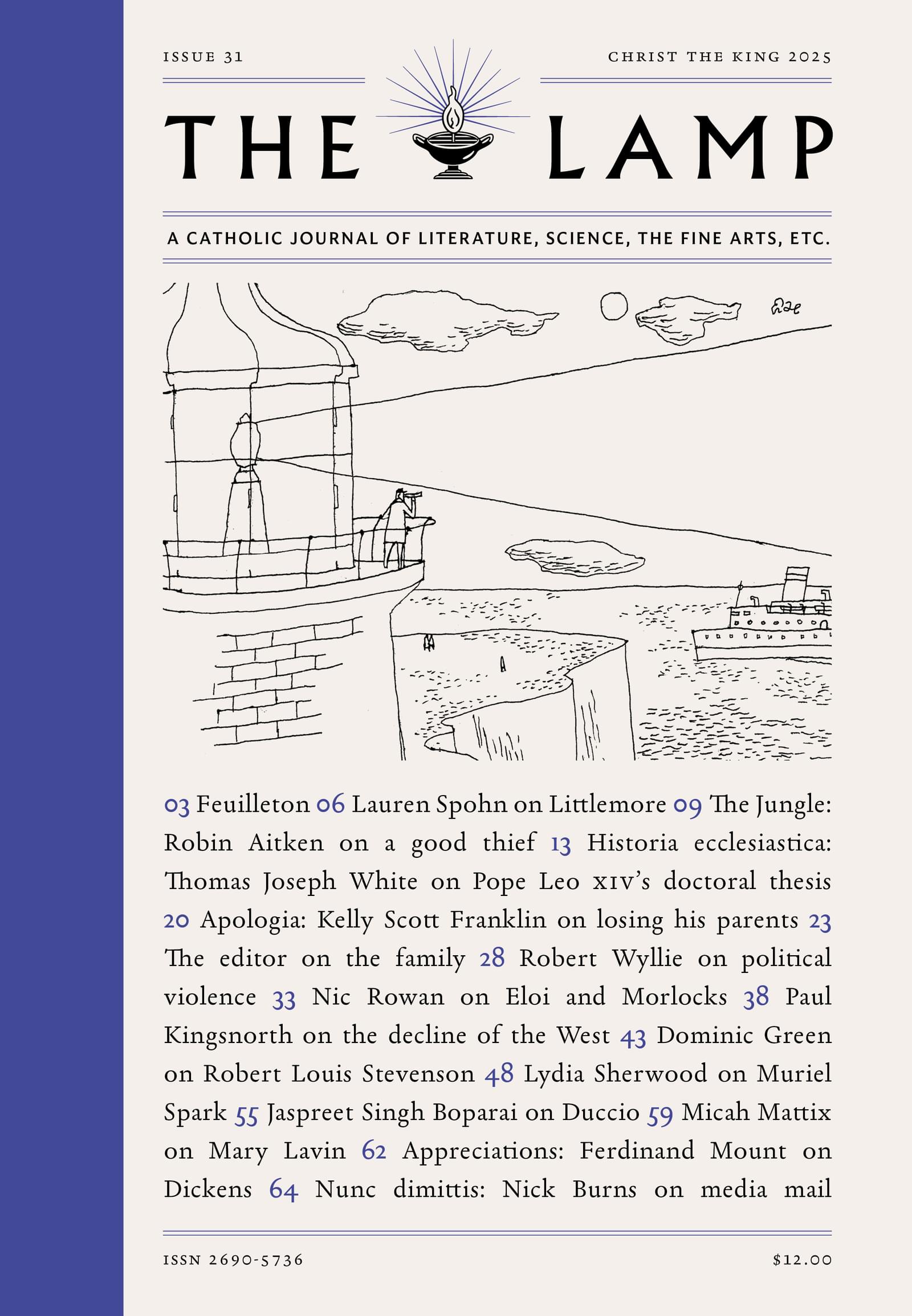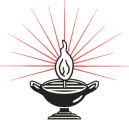Features
The Medical Religion
On the reigning system of belief in the modern West.
The Medical Religion
It has been evident for quite a while that science has become our time’s religion, the thing which people believe that they believe in. Three systems of beliefs have co-existed, and in some ways still co-exist today, in the modern West: Christianity, capitalism, and science. In the history of modernity these three “religions” often and unavoidably intersected, each time clashing with one another and then reconciling until they gradually reached a sort of peaceful, articulated cohabitation (if not a true collaboration, in the name of a common interest). What is new is that, without us noticing, a subterranean and implacable conflict between science and the other two religions has ignited. Science’s triumphs appear today before our very eyes, and they determine in an unprecedented way every aspect of our existence. This conflict does not pertain, as it did in the past, to general theories and principles but, so to speak, to cultic praxis. No less than any other religion, science organizes and arranges its own structure through different forms and ranks. To its elaboration of a subtle and rigorous dogmatics corresponds, in praxis, a vast and intricate cultic sphere that coincides with what we call “technology.” It is not surprising that the protagonist of this new religious war is the very branch of science whose dogmatics is less rigorous and whose pragmatic aspect is stronger: that is, medicine, whose object is the living human body. Let us try to define the essential features of this victorious faith—one which we will increasingly have to deal with.
The first feature is the fact that medicine, like capitalism, has no need for a special dogmatics because it is limited to borrowing its fundamental ideas from biology. Unlike biology, however, medicine articulates these ideas in a Gnostic or Manichean sense; that is to say, through an exacerbated dualistic opposition. There is a malign god or principle—namely, the disease, whose specific agents are, say, bacteria and viruses—and a beneficent god or principle—which is not health, but recovery, whose cultic agents are doctors and therapy. As in every Gnostic faith, these two principles are clearly separated but can, in praxis, contaminate one another: the beneficent principle and the doctor who represents it can err and unknowingly collaborate with their enemy, without thereby invalidating either the reality of the dualism or the cultic necessity through which the beneficent principle fights its battle. It is indeed significant that the theologians who have to entrench this strategy represent a science—virology—that does not possess its own place but stands at the border between biology and medicine.
If until now this cultic practice was, like every other liturgy, episodic and limited in time, the unexpected phenomenon which we are at present witnessing is that it has become permanent and ubiquitous. The cultic practice no longer concerns taking medications, being visited by a doctor, or undergoing surgery. Rather, the entire life of human beings must become, at every instant, the site of an uninterrupted cultic celebration. The enemy (the virus) is omnipresent and must be fought constantly and ceaselessly. The Christian religion knew such totalitarian tendencies as well, but they pertained only to some individuals—monks, in particular—who chose to entrust their whole existence to the principle of “pray[ing] without ceasing.” Medicine-as-religion embraces this Pauline precept and, at the same time, reverses it: whereas monks gathered in monasteries in order to pray together, the cult must now be practiced no less assiduously but with its devotees also remaining separate and at a distance from one another.
The cultic practice is no longer free or voluntary, nor is it exposed to penalties of a spiritual type: it has become mandatory and legally enforceable. This collusion between religion and profane power is certainly not a novel phenomenon; what is new, however, is the fact that this collusion pertains not to the profession of dogmas—as was the case with heresies—but only to the celebration of the cult. Profane power must be vigilant so that the liturgy of the medical religion—which by now coincides with all of life—is duly observed. It is immediately evident that what is here described is a cultic practice, not a scientific or rational necessity. The most frequent cause of death in our country is, by far, cardiovascular diseases, and it is known that these diseases could be diminished if healthier lifestyles and particular diets were adopted. But to no doctor has it ever occurred that this lifestyle and diet—which are, all the same, suggested to patients—could become the object of a legal rule, one that would decree ex lege what we should eat and how we should live, transforming our entire existence into a health obligation. And yet this has been put in place and, at least for now, people have accepted—as if it were common sense—the renunciation of their freedom of movement, of work, friendships, love, and social relationships, and of their own religious and political beliefs. We can see here how the two other Western religions—the religion of Christ and the religion of money—have surrendered their primacy to medicine and science, apparently without a fight. The Church has disavowed its principles, pure and simple, forgetting that the saint from whom the current pontiff takes his name used to embrace lepers, that one of the works of mercy is visiting the sick, and that the sacraments can only be administered in person. Capitalism, for its part, has with only a few exceptions accepted losses to productivity that it would have never previously considered, probably hoping that later on it can find an accord with the new religion (which, on this point, seems inclined to yield).
The medical religion has unreservedly adopted from Christianity the eschatological appeal dropped by the latter. Capitalism, by secularizing the theological paradigm of salvation, had already eliminated the idea of the end times, replacing it with a permanent state of crisis without redemption or end. Krisis was originally a medical concept which designated, in the Hippocratic corpus of texts, the moment when the doctor decided whether the patient would be able to survive the disease. Theologians reprised the term to indicate the final judgement that occurs during the last day. If we look at the state of exception which we are now experiencing, we could say that the medical religion combines the perpetual crisis of capitalism with the Christian idea of the end times, of an eschaton where the extreme decision is constantly ongoing and where the end is simultaneously rushed and deferred in an incessant effort to govern it, without its ever being resolved once and for all. It is the religion of a world that feels itself to be at its end, and yet it cannot—like the Hippocratic doctor—decide whether it will survive or die.
Like capitalism, and unlike Christianity, the medical religion offers no prospect of salvation or redemption. On the contrary, the recovery to which it aspires can only be temporary, given that the malignant god—the virus—cannot be annihilated once and for all: it rather mutates constantly, and it always assumes new shapes that are, presumably, ever more hazardous. The epidemic, as the etymology of the term suggests, is first and foremost a political concept that is about to become the new worldwide political—or non-political—terrain. It is quite possible that the epidemic that we are experiencing is the actualization of a global civil war that, according to the most attentive political analysts, is replacing traditional world wars. All nations and all peoples are now perpetually at war with themselves, because the invisible and elusive enemy that they are fighting is within them. As has occurred on multiple occasions in the course of history, philosophers will enter again into a conflict with religion—a religion which is no longer Christianity, but science, or that part of science that has assumed the form of a religion. I do not know if the stakes will be re-ignited or if there will be a list of prohibited books, but certainly the thought of those who keep seeking the truth and rejecting the dominant lie will, as we are already seeing, be excluded and accused of disseminating fake news (news, not ideas, because news is more important than reality!). As in all moments of real or simulated emergency, we will once again see philosophers being slandered by the ignorant, and scoundrels trying to profit from disasters that they themselves have instigated. All this has already happened and will keep happening—but those who speak the truth will never stop doing so, because nobody can bear witness for the witness.
Giorgio Agamben is an Italian philosopher and political theorist. This article is excerpted from his latest book, Where Are We Now?: The Epidemic as Politics, translated by Valeria Dani. It is reproduced here by arrangement with the publisher, Rowman & Littlefield.




